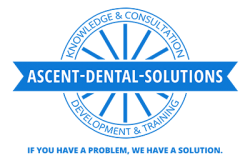7 Simple Ways to Boost Your Practice Without Busting Your Budget
Many dental practices are stuck in a bit of a rut. They have strong patient lists and make money each month, but they never seem to get over the hump that lies between “getting by” and “truly thriving.” Figuring out how to take your practice to the next level can be challenging, especially if your marketing budget is limited. Fortunately, these 7 simple tips can boost your practice without busting your budget.
Start a Blog
Blog setup and hosting fees are relatively cheap, and the return on investment can be significant. Not only will you see your website climb up the search rankings with the regular addition of new content, but a blog also helps to set the stage for long-term doctor-patient relationships with both existing and prospective patients. Use your blog to show people who you are, to talk about your practice, and to educate them on the field of dentistry. At once a patient empowerment tool, a trust-building exercise, and an easy way to communicate, a blog is arguably one of the best ways to boost your practice on a budget.
Use Social Media
It’s not enough to create a Facebook page and then ignore it. In today’s highly-connected world, people expect to engage with those they follow on a regular basis. Add Instagram, Pinterest, Twitter, and other social media accounts as well, and use them frequently. Choose interesting posts that encourage responses and engagement. Monitor your pages regularly for comments and respond to them as soon as possible.
Design a Referral Program
Word of mouth is always your most reliable source of advertising, and it doesn’t need to cost much at all. Develop a referral program that gives a small incentive each time a new patient lists an existing patient as their reason for choosing you. Be sure that your new patient paperwork asks for a referral name.
Join Your Community
One of the easiest ways to spread brand awareness and get new prospects to trust you is to get involved. Write an article for the local newspaper. Sponsor a Little League team. Attend community events. Becoming a known member of your local community will help ensure that people in town will think of you when they need a dentist.
Focus on Patient Retention
Remember that gaining new patients is only part of the equation. For your practice to thrive, you also need to keep your existing patients coming back regularly. Take a hard look at your current policies and procedures to find ways to become more patient-centric. Call each patient post-procedure. Add comfort items such as blankets and headphones. Give sugar-free gum or small toys to kids. Send birthday and holiday cards. Make your patients feel like VIPs, and they will be more likely to return.
Collaborate with Other Professionals
No dentist, no matter how talented, can truly be all things to all people. Reach out to those who specialize in areas that you do not to form valuable referral networks. Maybe you are an expert with kids and families, but you have less experience with elderly populations. The dentist down the street might specialize in geriatrics, but she prefers not to deal with minors. Likewise, you might work with an oral surgeon for patients who need dental implants, but make your own prosthetics in-house.
Offer Membership Plans
Many small businesses are struggling to provide employee benefits, and even the best dental insurance plans typically have low annual caps and long waiting periods for certain procedures. In addition, it is rare for dental insurance to pay more than 50%-80% of the total bill, even for many routine procedures.
An in-house membership plan is a great way to encourage patient loyalty while reducing your patients’ out of pocket costs. You can tailor different annual plans to the level of care different patients need, and offer a variety of payment options to fit various budgets. You can even offer family plans and plans for local small businesses.
Ready to Get Started?
If you are interested in learning how to take your dental practice to the next level, please contact Ascent Dental Solutions today at 413-224-2659 to learn how Dr. Coughlin can help.
